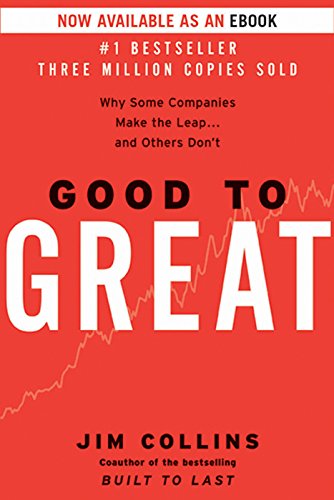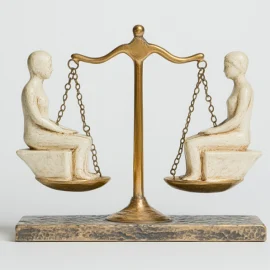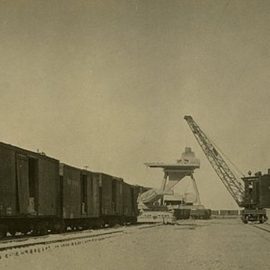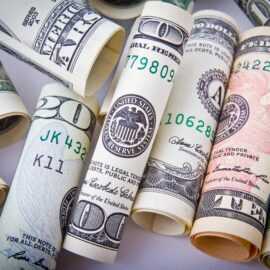

This article is an excerpt from the Shortform summary of "Good to Great" by Jim Collins. Shortform has the world's best summaries of books you should be reading.
Like this article? Sign up for a free trial here .
What are the Good-to-Great companies featured in Jim Collins’s book Good to Great? How did they qualify to be “good to great”? What can you learn from them?
Over five years, Collins’s team of 21 researchers reviewed close to 6,000 articles and generated over 2,000 pages of interview transcripts to determine whether and how companies can go from good to great. We’ll cover the good-to-great companies featured in the book and the lessons they teach us about how to take other companies from good to great.
Finding Good-to-Great Companies
Collins’s criteria for a good-to-great company was as follows:
- A fifteen-year stock return at or below the general market return; followed by
- A transition point; resulting in
- Fifteen-year cumulative returns at least 3x the general market return.
The team chose fifteen years as the default scale for two reasons:
- It’s long enough to rule out lucky breaks or one-offs; and
- It exceeds the average CEO’s tenure, thereby mitigating the singular effects of a particular leader.
Meanwhile, the team chose the 3x stock-return metric because it exceeded the returns posted by companies commonly thought of as great (Intel, Boeing, Walt Disney, etc.).
Collins and his team found 11 companies that satisfied the criteria of good-to-great companies. The answer was yes: companies could go from good to great. But how did these companies make the jump?
To determine what set these 11 good-to-great companies apart from their competition, Collins and his team compiled a list of “comparison companies.” Each comparison company:
- Competed in the same industry as its relative good-to-great company;
- Possessed similar resources and opportunities as its good-to-great company; and
- Featured a fifteen-year stock return at or below the general market return that remained at that level after the good-to-great company’s transition point.
The Good-to-Great Companies
The 11 good-to-great companies are listed below. Comparison companies are in parentheses, followed by the companies’ industries.
- Abbott (Upjohn) – Health Care
- Circuit City (Silo) – Retail
- Fannie Mae (Great Western) – Financial Services
- Gillette (Warner-Lambert) – Consumer Goods
- Kroger (A&P) – Retail
- Nucor (Bethlehem Steel) – Steel
- Philip Morris (R. J. Reynolds) – Tobacco
- Pitney Bowes (Addressograph) – Business Services
- Walgreens (Eckerd) – Pharmacy
- Wells Fargo (Bank of America) – Banking/Financial Services
In addition to direct comparisons with statically good companies, Collins and his team compared the good-to-great companies with companies that showed great results but couldn’t sustain them over the fifteen-year window (“Unsustained Comparisons”). Those companies are:
- Burroughs – Business Services
- Chrysler – Automotive
- Harris – Aerospace and Defense (previously Business Services)
- Hasbro – Toys/Entertainment
- Rubbermaid – Manufacturing
- Teledyne – Conglomerate (Electronics, Aerospace and Defense)
Once Collins and his team had determined the good-to-great companies and their comparisons, they compiled and coded material related to each company’s strategy, technology, leadership, culture, compensation structure, and management turnover. They also conducted interviews with the executives who presided over the various companies at the transition point.
Lessons from Good-to-Great Companies
In the process of analyzing and coding the various facets of the good-to-great companies and their comparisons, Collins and his team were clued into key concepts by a number of surprising differences.
- High-profile, celebrity CEOs brought in from the outside to whip a company into shape actually hurt a company’s ability to transition from good to great.
- “Strategy”—that is, the formulation of a long-term plan of any kind—didn’t correlate with good-to-great. Both the good-to-great companies and the comparison companies had long-term strategies in place.
- Technology was insignificant as far as starting a transition from good-to-great. It helps hasten a transformation, but isn’t required for a transformation to begin.
- Mergers and acquisitions were not a cause of greatness.
- Good-to-great transformations weren’t highlighted by a press release, announcement, rollout, or anything at all. Rather, they were the result of steady, dogged work that, to observers inside the company and out, seemed perfectly ordinary—even boring.
- The particular industry wasn’t important: Some good-to-great companies specialized in unglamorous areas yet were able nevertheless to produce great results.
Lesson #1 from Good-to-Great Companies: Leaders Should Be Self-Effacing, but Resolute
Level 5 Leaders tend to avoid the public eye, have a reserve demeanor, and even tend to shyness. But while not ambitious for themselves, they are ambitious for the company – they never back down from taking responsibility or making a difficult decision.
For example, Darwin E. Smith, CEO of Kimberly-Clark from the 70s through the 90s, was no darling of reporters: He wore unfashionable suits, was uncomfortable in interviews, and preferred the company of manual laborers to that of fellow executives. Rather than take flashy vacations to exotic locales, Smith spent his time off on his property in rural Wisconsin, performing hard labor himself.
Smith’s “aw shucks” demeanor, however, belied a rigorous and gutsy businessman. Shortly after he became CEO in 1971, Smith and his team determined that coated paper, which constituted the core of Kimberley-Clark’s business, featured both little opportunity for growth and poor competition. He made a momentous decision: to sell the company’s paper mills and go all in on consumer paper goods, where growth potential was significant and competition fierce.
The decision was panned by industry analysts, but it paid off: During Smith’s 20-year tenure as CEO, Kimberly-Clark produced cumulative stock returns 4.1x the general market return.
Lesson #2 from Good-to-Great Companies: They Assemble the Right Team: Wells Fargo
Wells Fargo’s rapid rise began in 1983, but the groundwork for its triumph was laid a decade earlier, when then-CEO Dick Cooley put together one of the most talented management teams in banking (the most talented, according to Warren Buffett).
Cooley predicted that banking would undergo massive changes in the coming decades, but he was also humble enough to know he couldn’t predict what those changes would be. So he instead decided to attract and retain as much talent as he could, even if positions had to be created for the new hires.
The strategy paid off when the major change—banking deregulation—came. While Wells Fargo’s sector as a whole trailed the general stock market by 59%, Wells Fargo boasted returns 3x the market.
Wells’s eye for talent was confirmed in the years after its triumph. Many of the executives that oversaw the bank’s navigation of banking deregulation went on to become CEOs of other major companies, including U.S. Bancorp, Household Finance, and Bank of America.
Lesson #3 from Good-to-Great Companies: They Value Facts Over Fantasy: A&P and Kroger
At the beginning of the 1970s, two well-established grocery companies—A&P and Kroger—were similarly positioned to take advantage of new consumer demand for a one-stop shopping experience: Both companies had almost all their assets invested in grocery stores, and both were strongest in slower-growth areas of the U.S.
But whereas Kroger saw the demand for “superstores”—establishments that sold everything from conventional groceries to prepared foods to nutritional supplements and medicines—and met it by overhauling 100% of their stores, A&P stayed the course—and got buried. From 1973 to 1998, Kroger generated returns 10x the general market and 80x that of A&P.
A&P’s failure wasn’t due to lack of information. In fact, A&P executives rolled out an experimental store, called The Golden Key, that was completely separate from the A&P brand and provided the supercombination store experience. The store was a success, but A&P’s management simply didn’t want to accept the results: The CEO, Ralph Burger, was more concerned with honoring the company’s founding principles than adjusting to a changing marketplace.
A&P’s fate was sealed when they embarked on a steep price-cutting strategy to grab market share, which, when the customers still didn’t materialize, resulted in a vicious cycle of cost-cutting and further decline.
The executives who led Kroger’s transformation, when reminiscing about the decision to change strategy, expressed a kind of hardiness. That is, they were going to go where the facts led them, critics and competitors be damned.
Lesson #4 from Good-to-Great Companies: They Value Hedgehog Thinking: Walgreens
From 1975 to 2000, Walgreens delivered stock returns 15x the general market return, dwarfing the performance of Eckerd, its comparison company.
Walgreens’s resurgence was fueled by an utterly simple concept: to build the most convenient drugstores with the highest profit per customer visit in the industry.
Once the concept had been determined, it was just a matter of doing whatever it took to serve the concept: building stores on corners rather than midblock, clustering stores in high-traffic areas, providing drive-through pharmacy services, and adding highly profitable services like one-hour photo development.
Eckerd, meanwhile, had no unifying concept for growth. It made sporadic deals to acquire stores in discrete areas, and even tried getting into the home-video industry by purchasing American Home Video Corporation (a move that resulted in a $31 million loss). Twenty years after that ill-starred purchase, Walgreens was sustaining its stellar performance—and Eckerd no longer existed as an independent company.
Lesson #5 from Good-to-Great Companies: The Have Disciplined Cultures: Pitney Bowes
Up until the 1960s, Pitney Bowes held a monopoly on postage-meter machines in the United States. Their 100% market capture produced profit margins in excess of 80%.
During the 1960s, however, the company was forced by a consent decree to license its patents to competitors for free, ending its monopoly and setting off a steep decline punctuated by silly acquisitions and ill-advised joint ventures. (One such misstep resulted in a $70 million loss and a 54% hit to stockholder equity.)
The slide seemed unstoppable—until a Level 5 executive named Fred Allen took over the company.
Allen instituted a program of “disciplined diversification” based on the Hedgehog Concept that Pitney Bowes’s future lay in back-office products rather than postage meters. Rather than make acquisitions indiscriminately and out of desperation, Allen placed careful bets on cutting-edge office technologies and products that fit with the company’s new Hedgehog Concept.
Through disciplined hedgehog thinking, Pitney Bowes not only clawed its way back to profitability but exceeded expectations. From its 1973 nadir to 2000, the company bested many of the most famous companies in the world, including Coca-Cola, Motorola, and Hewlett-Packard.
———End of Preview———

Like what you just read? Read the rest of the world's best summary of "Good to Great" at Shortform . Learn the book's critical concepts in 20 minutes or less .
Here's what you'll find in our full Good to Great summary :
- The 3 key attributes of Great companies
- Why it's better to focus on your one core strength than get spread thin
- How to build a virtuous cycle, or flywheel effect, in your business






